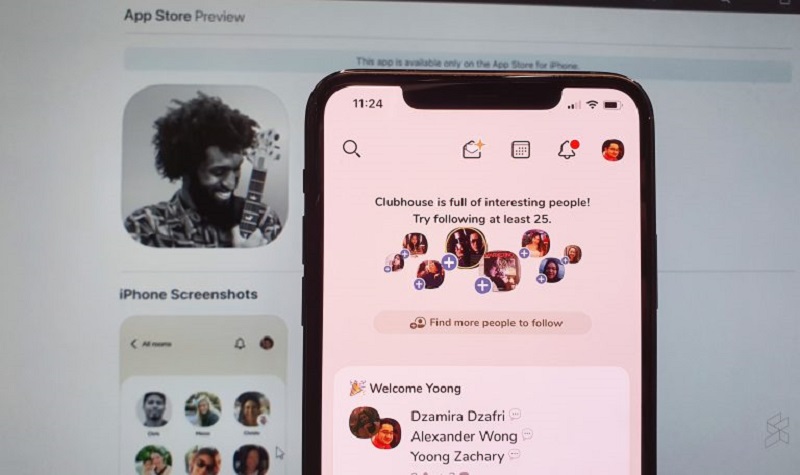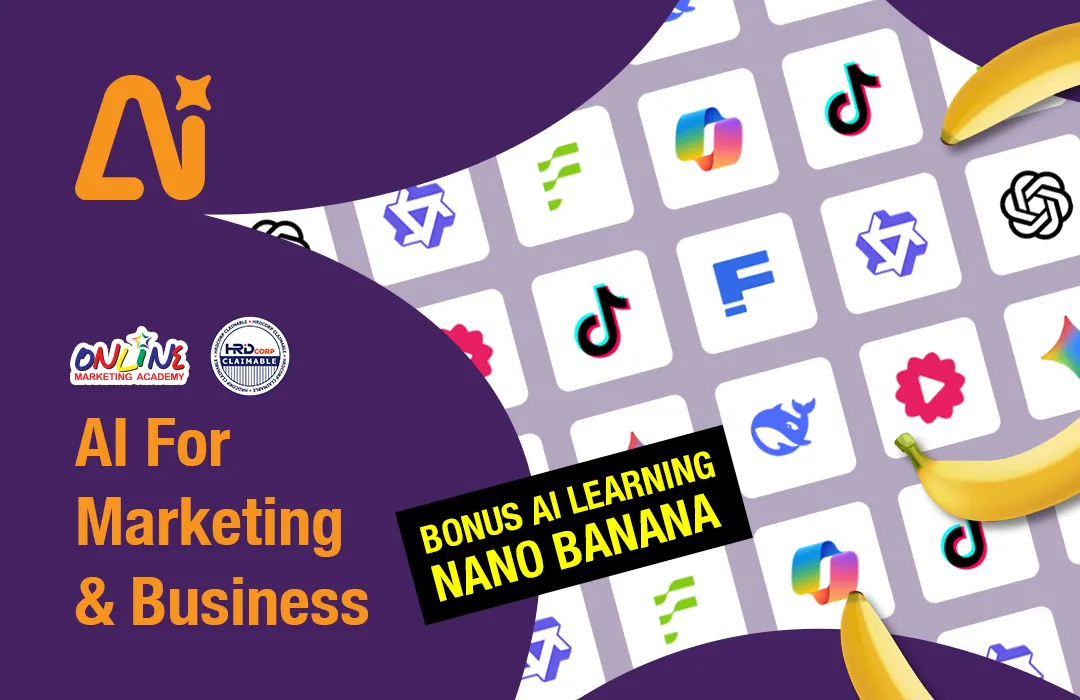These tech jobs may disappear in the face of automation
23 October 2020
When Dale Wilkinson first set out to launch a website, he had never written a line of code before. His first step as a non-technical founder seemed clear – he needed to find a software developer to build out his vision.
He found one in Los Angeles, but then he discovered on Twitter a company called Bubble, a service that lets users build web applications with a visual editor, without writing any code themselves. For Wilkinson, it was a game changer. In mid-2019, the 37-year-old launched Goodgigs, which connects mission-driven companies with people seeking work. Sign-ups have since grown to some 1,300, and more than a dozen companies are paying Goodgigs to list job openings on the site.
Bubble, a player in the burgeoning “no code” space, is just one of a number of platforms that’s been quickly scaling to try and lighten the load off of entrepreneurs and major corporations. These platforms take over the prosaic task of coding applications, tools and functionalities that can be generated virtually automatically.
These innovations, while no doubt providing a boon in efficiency to the companies using these tools, have left an existential question: When does coding software replace the need for coders themselves?
It’s not just venture-backed startups like Bubble that are increasingly building programs to streamline web and software development and other tech work. Some of the biggest tech companies are rapidly deploying programs that automate certain functions. Amazon’s (AMZN) HoneyCode lets users build web and mobile applications without writing code, Amazon CodeGuru uses machine learning to automate coding reviews and recommend coding improvements to developers, and Amazon SageMaker builds and trains machine learning models for its tens of thousands of customers. Alphabet’s (GOOG, GOOGL) Google Cloud AutoML offers a similar service.
“We would need an army of data scientists to make faster decisions on pricing and inventory,” Deepak Mehrotra, co-founder of California Design Den, declared in a Google Cloud AutoML case study. “With Google Cloud Platform machine learning and artificial intelligence, we don’t need that.”
‘First wave of no-code AI’
The question has only grown in its timeliness over the course of 2020, with the pandemic-related economic crisis accelerating the corporate need to slash costs and streamline work.
Demand for automation increases in times of economic strain, based on data from previous recessions: A 2016 report by researchers at the W.E. Upjohn Institute for Employment Research and Yale looked at 87 million job postings before and after the Great Recession, and found that the downturn in fact accelerated what they called “routine-biased technological change.” A more recent report in September this year from McKinsey found that of 800 executives surveyed, nearly half noted that their adoption of automation accelerated “moderately,” and roughly 20% reported “significantly increasing” automation during the COVID-19 pandemic.
“We think it’s all gradual, but actually, there are spikes, and we may be in one right now, where AI technology has been getting better and better and commoditized, and getting cheaper through the last decade,” Brookings Institution researcher Mark Muro told Yahoo Finance.
Low-skilled jobs like cashiers, truck drivers and assembly-line workers are typically thought of as the first in line to be fully displaced when it comes to automation. But even high-skilled workers like software developers have room for at least parts of their work to be streamlined, according to Muro.
“I think in the near-term, it can be viewed as complementary. It may remove boring work and so on. But that’s really always the story with these technologies,” he added. “And they eventually contribute to efficiencies and productivity and usually do reduce the headcount. We probably shouldn’t beat around the bush on that.”
A Brookings paper from November 2019 that ranked professions on their relative exposure to AI, listed computer programmers as the occupation third most exposed, following market research analysts and sales managers at first and second, respectively.
But exposure — which could involve simply having workers use AI tools as part of their day-to-day tasks — isn’t always the same as fully replacing the workers themselves. That said, substitution of individual tasks in coders’ and developers’ jobs is already in full swing, according to Ravin Jesuthasan, author and member of the World Economic Forum’s Steering Committee on Work and Employment.
“I would say, if you think of it as three waves, we’re probably in the first wave of no-code AI, in terms of the types of work that is being substituted,” Jesuthasan told Yahoo Finance in an interview. “The big underpinning there is that the half-life of these technical skills is shrinking dramatically. And that is as true of developers and data scientists and the like, as it is of any technical skill, whether it’s an accountant, et cetera.”
Other major business leaders have sounded an even more dire alarm for coders specifically.
Jack Dorsey, CEO of Twitter and Square (SQ), told former Democratic presidential candidate Andrew Yang earlier this year that artificial intelligence is “even coming for programming,” and that eventually, “a lot of entry-level programming jobs will just not be as relevant anymore.”
Investor Mark Cuban offered a similar take in an interview with Recode’s Kara Swisher last year.
“Twenty years from now, if you are a coder, you might be out of a job,” Cuban told Swisher. “Long term, it’s like people who learned COBOL or Fortran and thought that was the future and they were going to be covered forever. The value’s going to diminish over time.”
That thinking, however, appears to be at odds with data on growth prospects for software developers in the U.S. economy. According to the Bureau of Labor Statistics, software developer employment is expected to grow 22% between 2019 and 2029 — far greater than the average growth rate of 4% expected for all occupations over that period. And oftentimes anecdotally, companies discuss a shortage, not a surplus, of developers and high-skilled tech talent.
But it is the shortage of high-skilled developers in the labor force that has, somewhat ironically, increased the urgency for those who are out there to create programs meant to plug the gap, according to Jesuthasan.
‘Turbocharge what humans can do’
Still, others sharply disagreed with the notion that new tools will eventually lead to fewer coding positions.
“There has been a lot of discussion on Twitter about AI replacing developers. We’re totally not subscribing to that school of thinking,” Dror Weiss, the founder of Israel-based startup Codota, told Yahoo Finance.
Weiss’ company is an AI autocomplete coding platform, offering a service for developers that works like a coding-language version of text autocomplete on smartphones. It raised another $12 million earlier this year, and has been used by developers at companies including Netflix (NFLX), Airbnb and Alibaba (BABA). Codota and its ilk are the “best companion to developers,” not a full replacement, he said.
“[We] put the developer at the center and see what the technology, the AI, can do to empower the developer, and make them better and more efficient,” Weiss said. “What we are really trying to accomplish is to double the productivity of developers and teams.”
That said, the capabilities of some other new deep-learning models do raise the specter of fully replacing a number of jobs, or at substituting an increasing number of tasks within a job description.
For instance, OpenAI’s GPT-3, dubbed by MIT Technology Review as the “most powerful language model ever,” can be set to write HTML and other code with just a simple text description of whatever feature the user wants it to generate. The language model was exclusively licensed to Microsoft (MSFT) last month, though it’s unclear how the company will deploy the technology.
But to these capabilities, Erik Brynjolfsson, director of the Digital Economy Lab at Stanford’s Institute for Human-Centered AI, offered a simpler and more upbeat analogy about their implications for work.
“I think that may generate some more opportunities for coders, because it won’t necessarily run right out of the box. It creates some possibilities to sort of turbocharge what humans can do, just like a human can build more with a steam shovel than with a regular shovel, and therefore, there may be more construction workers,” Brynjolfsson told Yahoo Finance. “Or, a pilot can fly more people with a jet than with a propeller plane — that creates more jobs for pilots. It’s entirely possible that when a technology amplifies human capabilities, it leads to more jobs, not fewer jobs.”
Whether for software development or any other task, “Machine learning works very well on well structured tasks, where there’s a clear set of inputs and a clear set of outputs, where the problem is well defined,” Brynjolfsson added. “The hard part that machines can’t do very well really at all is defining the problem and dealing with an unstructured problem space — large scale unstructured problem solving. Humans have a big advantage in that.”
And as Bubble co-CEO and founder Emmanuel Straschnov noted, there will more than likely always be an enduring need for developers of some kind to generate the next leap forward in innovation.
“The world that we think we should have going forward is a world where business people can build products and coders are still part of the picture, but only when something new is needed,” Straschnov said.
Source: Yahoo
He found one in Los Angeles, but then he discovered on Twitter a company called Bubble, a service that lets users build web applications with a visual editor, without writing any code themselves. For Wilkinson, it was a game changer. In mid-2019, the 37-year-old launched Goodgigs, which connects mission-driven companies with people seeking work. Sign-ups have since grown to some 1,300, and more than a dozen companies are paying Goodgigs to list job openings on the site.
Bubble, a player in the burgeoning “no code” space, is just one of a number of platforms that’s been quickly scaling to try and lighten the load off of entrepreneurs and major corporations. These platforms take over the prosaic task of coding applications, tools and functionalities that can be generated virtually automatically.
These innovations, while no doubt providing a boon in efficiency to the companies using these tools, have left an existential question: When does coding software replace the need for coders themselves?
It’s not just venture-backed startups like Bubble that are increasingly building programs to streamline web and software development and other tech work. Some of the biggest tech companies are rapidly deploying programs that automate certain functions. Amazon’s (AMZN) HoneyCode lets users build web and mobile applications without writing code, Amazon CodeGuru uses machine learning to automate coding reviews and recommend coding improvements to developers, and Amazon SageMaker builds and trains machine learning models for its tens of thousands of customers. Alphabet’s (GOOG, GOOGL) Google Cloud AutoML offers a similar service.
“We would need an army of data scientists to make faster decisions on pricing and inventory,” Deepak Mehrotra, co-founder of California Design Den, declared in a Google Cloud AutoML case study. “With Google Cloud Platform machine learning and artificial intelligence, we don’t need that.”
‘First wave of no-code AI’
The question has only grown in its timeliness over the course of 2020, with the pandemic-related economic crisis accelerating the corporate need to slash costs and streamline work.
Demand for automation increases in times of economic strain, based on data from previous recessions: A 2016 report by researchers at the W.E. Upjohn Institute for Employment Research and Yale looked at 87 million job postings before and after the Great Recession, and found that the downturn in fact accelerated what they called “routine-biased technological change.” A more recent report in September this year from McKinsey found that of 800 executives surveyed, nearly half noted that their adoption of automation accelerated “moderately,” and roughly 20% reported “significantly increasing” automation during the COVID-19 pandemic.
“We think it’s all gradual, but actually, there are spikes, and we may be in one right now, where AI technology has been getting better and better and commoditized, and getting cheaper through the last decade,” Brookings Institution researcher Mark Muro told Yahoo Finance.
Low-skilled jobs like cashiers, truck drivers and assembly-line workers are typically thought of as the first in line to be fully displaced when it comes to automation. But even high-skilled workers like software developers have room for at least parts of their work to be streamlined, according to Muro.
“I think in the near-term, it can be viewed as complementary. It may remove boring work and so on. But that’s really always the story with these technologies,” he added. “And they eventually contribute to efficiencies and productivity and usually do reduce the headcount. We probably shouldn’t beat around the bush on that.”
A Brookings paper from November 2019 that ranked professions on their relative exposure to AI, listed computer programmers as the occupation third most exposed, following market research analysts and sales managers at first and second, respectively.
But exposure — which could involve simply having workers use AI tools as part of their day-to-day tasks — isn’t always the same as fully replacing the workers themselves. That said, substitution of individual tasks in coders’ and developers’ jobs is already in full swing, according to Ravin Jesuthasan, author and member of the World Economic Forum’s Steering Committee on Work and Employment.
“I would say, if you think of it as three waves, we’re probably in the first wave of no-code AI, in terms of the types of work that is being substituted,” Jesuthasan told Yahoo Finance in an interview. “The big underpinning there is that the half-life of these technical skills is shrinking dramatically. And that is as true of developers and data scientists and the like, as it is of any technical skill, whether it’s an accountant, et cetera.”
Other major business leaders have sounded an even more dire alarm for coders specifically.
Jack Dorsey, CEO of Twitter and Square (SQ), told former Democratic presidential candidate Andrew Yang earlier this year that artificial intelligence is “even coming for programming,” and that eventually, “a lot of entry-level programming jobs will just not be as relevant anymore.”
Investor Mark Cuban offered a similar take in an interview with Recode’s Kara Swisher last year.
“Twenty years from now, if you are a coder, you might be out of a job,” Cuban told Swisher. “Long term, it’s like people who learned COBOL or Fortran and thought that was the future and they were going to be covered forever. The value’s going to diminish over time.”
That thinking, however, appears to be at odds with data on growth prospects for software developers in the U.S. economy. According to the Bureau of Labor Statistics, software developer employment is expected to grow 22% between 2019 and 2029 — far greater than the average growth rate of 4% expected for all occupations over that period. And oftentimes anecdotally, companies discuss a shortage, not a surplus, of developers and high-skilled tech talent.
But it is the shortage of high-skilled developers in the labor force that has, somewhat ironically, increased the urgency for those who are out there to create programs meant to plug the gap, according to Jesuthasan.
‘Turbocharge what humans can do’
Still, others sharply disagreed with the notion that new tools will eventually lead to fewer coding positions.
“There has been a lot of discussion on Twitter about AI replacing developers. We’re totally not subscribing to that school of thinking,” Dror Weiss, the founder of Israel-based startup Codota, told Yahoo Finance.
Weiss’ company is an AI autocomplete coding platform, offering a service for developers that works like a coding-language version of text autocomplete on smartphones. It raised another $12 million earlier this year, and has been used by developers at companies including Netflix (NFLX), Airbnb and Alibaba (BABA). Codota and its ilk are the “best companion to developers,” not a full replacement, he said.
“[We] put the developer at the center and see what the technology, the AI, can do to empower the developer, and make them better and more efficient,” Weiss said. “What we are really trying to accomplish is to double the productivity of developers and teams.”
That said, the capabilities of some other new deep-learning models do raise the specter of fully replacing a number of jobs, or at substituting an increasing number of tasks within a job description.
For instance, OpenAI’s GPT-3, dubbed by MIT Technology Review as the “most powerful language model ever,” can be set to write HTML and other code with just a simple text description of whatever feature the user wants it to generate. The language model was exclusively licensed to Microsoft (MSFT) last month, though it’s unclear how the company will deploy the technology.
But to these capabilities, Erik Brynjolfsson, director of the Digital Economy Lab at Stanford’s Institute for Human-Centered AI, offered a simpler and more upbeat analogy about their implications for work.
“I think that may generate some more opportunities for coders, because it won’t necessarily run right out of the box. It creates some possibilities to sort of turbocharge what humans can do, just like a human can build more with a steam shovel than with a regular shovel, and therefore, there may be more construction workers,” Brynjolfsson told Yahoo Finance. “Or, a pilot can fly more people with a jet than with a propeller plane — that creates more jobs for pilots. It’s entirely possible that when a technology amplifies human capabilities, it leads to more jobs, not fewer jobs.”
Whether for software development or any other task, “Machine learning works very well on well structured tasks, where there’s a clear set of inputs and a clear set of outputs, where the problem is well defined,” Brynjolfsson added. “The hard part that machines can’t do very well really at all is defining the problem and dealing with an unstructured problem space — large scale unstructured problem solving. Humans have a big advantage in that.”
And as Bubble co-CEO and founder Emmanuel Straschnov noted, there will more than likely always be an enduring need for developers of some kind to generate the next leap forward in innovation.
“The world that we think we should have going forward is a world where business people can build products and coders are still part of the picture, but only when something new is needed,” Straschnov said.
Source: Yahoo










 Whatsapp Us +6011 1144 5462
Whatsapp Us +6011 1144 5462



